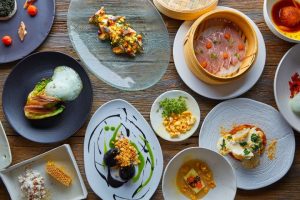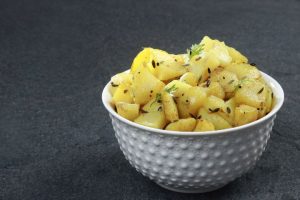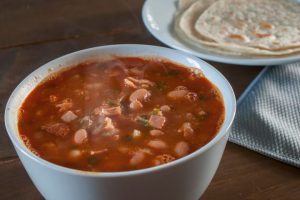Spice Up Your Party with a 5 Gallon Jambalaya Recipe
Introduction
Contents
Feed a crowd with our flavorful 5 gallon jambalaya recipe. Perfect for gatherings and events. Get the taste of Louisiana. Jambalaya is a cherished Louisiana dish that combines a satisfying medley of flavors, making it a staple at gatherings and activities. While traditionally cooked in smaller portions, the idea of preparing jambalaya in big portions opens up a world of possibilities for hosting memorable feasts and catering to a crowd.
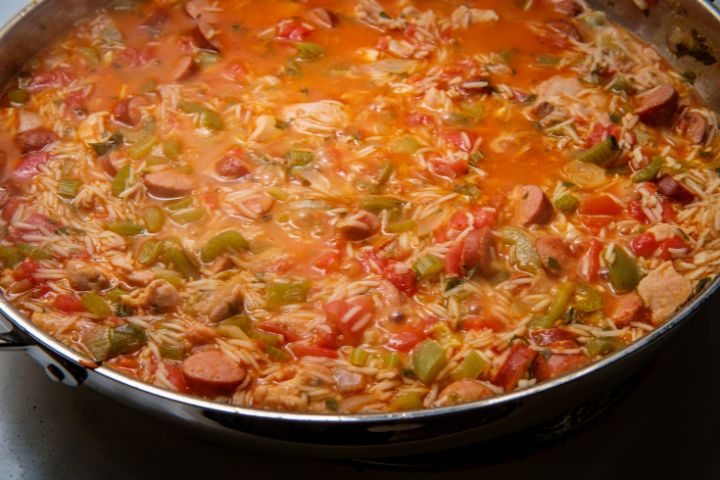
Equipment and Ingredients
Selecting a suitable 5-gallon pot for cooking
When cooking jambalaya on a larger scale, it’s essential to have a pot that can accommodate the extent while also making sure of even heat distribution. Look for a strong and spacious 5-gallon pot that is appropriate for stovetop or outdoor cooking jambalaya (Recipe).
Procuring terrific components for jambalaya
To create mouthwatering jambalaya, sourcing top-notch ingredients is essential. Consider the following additives for your five-gallon batch:
Fresh meats: Opt for a combination of sausage, chicken, and/or shrimp to infuse the dish with delectable flavors and textures.
Aromatic vegetables such as onions, bell peppers, and celery are the muse of the “holy trinity” in Cajun cooking, presenting depth and complexity.
Rice and spices: Choose long-grain rice, which absorbs the flavors of the dish while retaining a pleasant texture. Enhance the taste with Cajun seasoning, thyme, bay leaves, and different spices.
Optional additions: Consider including okra or tomatoes to add a completely unique touch to your jambalaya, developing a lovely interaction of flavors.
Preparing the Protein
Choosing and preparing the meat options
Priorities top-notch meats and ensure they are properly wiped clean and trimmed. Slice the sausage into chunk-sized portions and reduce the chicken into similar quantities. If using shrimp, devein and peel them, leaving the tails intact for presentation.
Properly seasoning and marinating the proteins
Elevate the taste of the proteins by seasoning them generously with a blend of Cajun spices, salt, and pepper. For even more flavor infusion, marinate the meats for a few hours or overnight in the refrigerator.
Cooking the proteins to favor tenderness and flavor
Sear the sausage and bird in the pot till nicely browned, making sure they develop a rich caramelization. If using shrimp, upload them in the direction of the stop of the cooking procedure to avoid overcooking. Remove the proteins from the pot and set them aside even as you put together the flavor base.
Building Flavor with Aromatics
Exploring the holy trinity of Cajun cooking: onions, bell peppers, and celery
Begin by finely reducing the onions, bell peppers, and celery to form the aromatic foundation of your jambalaya. These veggies lend a specific flavor profile and provide a strong base for the dish.
Sautéing the aromatics to create a taste base
Heat a little oil in the 5-gallon pot jambalaya recipe and add the chopped veggies. Sauté them till they grow tender and aromatic, freeing their herbal sugars and infusing the dish with their essence. This step forms the heart of Jambalaya’s taste profile.
Adding depth with extra spices and herbs
Enhance the complexity of flavors by incorporating Cajun seasoning, thyme, bay leaves, and any other desired spices or herbs. Allow them to bloom and meld with the sautéed aromatics, growing a strong and fragrant base for the jambalaya.
Rice and Liquid Ratio
Determining the proper rice-to-liquid ratio for a five-gallon batch
Achieving the right rice-to-liquid ratio is vital for a successful jambalaya. As a standard tenet, use about 1.5 cups of rice per gallon of liquid. Adjust this ratio to house your 5-gallon pot, ensuring stability between the rice’s absorption and the desired consistency.
Choosing the right sort of rice for jambalaya
Opt for long-grain rice, including Louisiana-grown jasmine or basmati rice. These varieties maintain their character while cooked, letting them absorb the flavors of the jambalaya even as they become fluffy and separate.
Adjusting liquid measurements for desired consistency
To obtain a properly balanced jambalaya, use a mixture of hen or vegetable broth and water as your cooking liquid. Adjust the liquid amount based on the preferred consistency of your jambalaya, bearing in mind that the rice will absorb a portion of the liquid throughout cooking.
Cooking Techniques
Sautéing, browning, and layering flavors
Once the taste base is ready, reintroduce the proteins back into the pot, letting them mingle with the aromatic combination. This step facilitates the development of deep, complex flavors as the substances engage and construct upon each other.
Incorporating the proteins into the pot
Carefully add the cooked sausage, bird, and/or shrimp to the pot, making sure they are frivolously allotted. This guarantees that each chew of jambalaya showcases the pleasant combination of proteins.
Simmering and stirring strategies for even cooking
Cover the pot and allow the jambalaya to simmer on low heat, allowing the rice to cook and absorb the flavors from the substances. Stir every now and then to prevent sticking and ensure even cooking, taking care not to overmix and smash the grains of rice.
Balancing Flavors
Adjusting seasonings at some stage in the cooking process
Taste the jambalaya as it simmers and adjust the seasonings as a result. Add more Cajun seasoning, salt, or different spices to acquire the preferred taste profile. Remember, it is easier to add seasoning steadily than to accurately salt an over-salted dish.
Incorporating acidity and sweetness for stability
Balance the flavors of your jambalaya by incorporating a touch of acidity and beauty. Consider adding a touch of sparkling lemon juice or a spoonful of brown sugar to enhance the general taste and bring out the complexity of the dish.
Allowing flavors to meld and develop through the years
Jambalaya is one of those dishes that gets better with time. Allow the jambalaya to simmer for an extended duration, allowing the flavors to meld and become a harmonious composition. This method deepens the flavor and guarantees a more gratifying dining experience.
Serving Suggestions
Pairing jambalaya with traditional accompaniments
Serve your 5-gallon jambalaya (Recipe) with classic accompaniments, including warm cornbread or crusty French bread. These alternatives offer a delightful contrast in texture and function as vehicles for savoring each remaining bit of the flavorful jambalaya.
Garnishing options for added visual attraction
Sprinkle freshly chopped green onions, parsley, or cilantro on top of the jambalaya just before serving. These colorful garnishes no longer most effectively decorate the visual appeal but additionally add a burst of freshness to each plate.
Recommended beverage pairings
Complement the rich and formidable flavors of jambalaya with refreshing beverage alternatives. Consider serving iced tea, craft beer, or maybe a fruity sangria to provide a nice comparison and balance to the spice-infused dish.
Storage and reheating
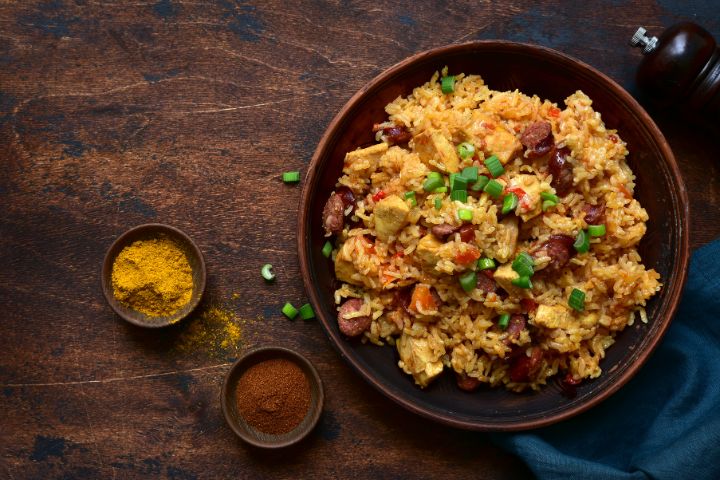
Properly storing leftover jambalaya
If you have any leftovers, save them in airtight boxes in the fridge. Divide them into individual quantities for easier reheating and future food.
Tips for reheating without sacrificing flavor or texture
To reheat jambalaya, add a dash of water or broth to a skillet and lightly heat the dish over medium heat. This method allows for the preservation of the flavors and textures of the jambalaya, making it a fulfilling meal even if loved as leftovers.
Variations and customizations
Exploring nearby jambalaya versions
Embrace the culinary variety by exploring nearby jambalaya versions. Try the Creole-style jambalaya, which includes tomatoes, or the rustic Cajun model, which focuses more on the flavor base of the dish. These variations provide exciting twists on the classic jambalaya recipe.
Dietary changes
Jambalaya may be easily adapted to various nutritional possibilities and regulations. Consider creating vegetarian variations through the use of plant-based proteins, or explore gluten-free alternatives by using gluten-free sausage and ensuring the broth and seasonings are free of gluten-containing substances.
Creative substitutions and additions
Don’t be afraid to experiment with factor substitutions or additions to customize your jambalaya. Incorporate your favorite seafood, such as crawfish or crab, or introduce unique substances like smoked sausage or andouille for an added layer of smokiness and complexity.
Tips for Hosting a Jambalaya Feast
Scaling the recipe for larger or smaller gatherings
Adjust the recipe in keeping with the scale of your collection. Increase or lower the element portions while keeping the equal ratios to ensure a regular and nicely balanced jambalaya, irrespective of the number of visitors.
Setting up a jambalaya bar for visitors to personalize their bowls
Create an interactive experience by setting up a jambalaya bar and supplying numerous toppings and condiments for visitors to personalize their bowls. Include options like warm sauce, diced tomatoes, shredded cheese, or chopped pickled peppers.
Organizing and making plans ahead for a successful occasion
Hosting a jambalaya ceremonial dinner calls for a few plans and agencies. Prepare as much as possible earlier, including slicing veggies, marinating meats, and measuring out spices. This way, you can focus on enjoying the cooking system and spending time with your visitors.
Conclusion
A recap of the key steps in preparing a scrumptious 5-gallon jambalaya
In the end, preparing a 5-gallon jambalaya (Recipe) requires careful attention to detail and knowledge of the flavors that make this dish so popular. From deciding on the proper gadget and exceptional substances to balancing flavors and exploring versions, following these steps ensures a tasty and memorable jambalaya experience.
Encouragement to experiment, adapt, and revel in the flavors of this classic dish
Jambalaya is a flexible and customizable dish that encourages creativity and exploration in the kitchen. Experiment with extraordinary combinations of proteins, veggies, and spices to create your very own signature jambalaya recipe. Embrace the possibility to adapt and enjoy the rich flavor’s that this traditional Louisiana dish has to offer.
FAQs
Can I make a smaller batch of jambalaya using this recipe?
Absolutely! The recipe can be easily scaled down for smaller gatherings or private servings. Just modify the component quantities accordingly while preserving the equal ratios.
Can I use frozen meat or seafood for the jambalaya?
While clean components are desired for the most satisfying taste and texture, you could use frozen meat or seafood in a pinch. Just make certain to thaw them completely before cooking and alter the cooking time for this reason.
Is jambalaya a spicy dish?
Jambalaya will have varying levels of spiciness depending on the amount of Cajun seasoning or different spices you use. You can modify the spiciness to your liking by adding more or much less space for the duration of the cooking technique.
Can I make jambalaya ahead of time?
Jambalaya really tastes better when the flavors have had time to meld. You can make it ahead of time and refrigerate it, allowing the flavors to increase even further. When ready to serve, lightly reheat the jambalaya on the stovetop.
Can I freeze jambalaya?
Yes, jambalaya may be frozen for destiny food. Let the cooked jambalaya cool completely before transferring it to freezer-secure bins or luggage. When reheating, thaw it in the fridge for a single day and then lightly warm it on the stovetop.
Can I substitute the proteins in the recipe?
Absolutely! Feel free to replace the meats or seafood with your favorites. Popular options include crawfish, crab, or even tofu for vegetarian variations. Just make certain that the proteins are cooked to the proper temperature before adding them to the jambalaya.
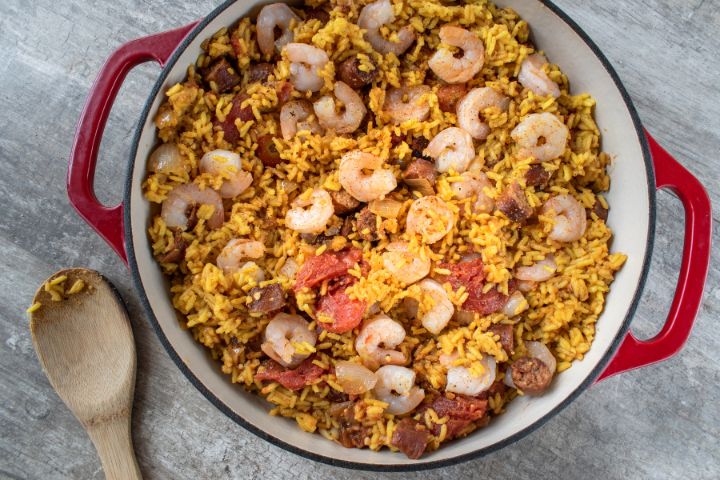
Can I make a milder version of Jambalaya?
If you decide upon a milder flavor, you may reduce the amount of Cajun seasoning or omit the spicier components, which include cayenne pepper or hot sauce. You can still experience the rich flavors of jambalaya without the extreme warmth.
How long does it take to cook a 5-gallon batch of jambalaya (Recipe)?
The cooking time for a five-gallon batch of jambalaya will depend upon various factors, including the heat degree and the tenderness of the proteins. Generally, it can take anywhere from 1.5 to 2.5 hours for the flavors to broaden and the rice to cook dinner.
Can I make jambalaya in a slow cooker or Instant Pot?
A: Yes, jambalaya can be tailored for cooking in a slow cooker or Instant Pot. Follow the producer’s instructions for cooking times and modify the portions accordingly. Keep in mind that the feel and flavors may additionally vary slightly from stovetop guidance.
Is jambalaya a traditional dish for a selected occasion?
Jambalaya is a versatile dish that may be loved year-round, but it holds special importance during festive events like Mardi Gras or Cajun and Creole-themed gatherings. It’s a crowd-pleaser that brings human beings together to enjoy the flavors of Louisiana cuisine.


